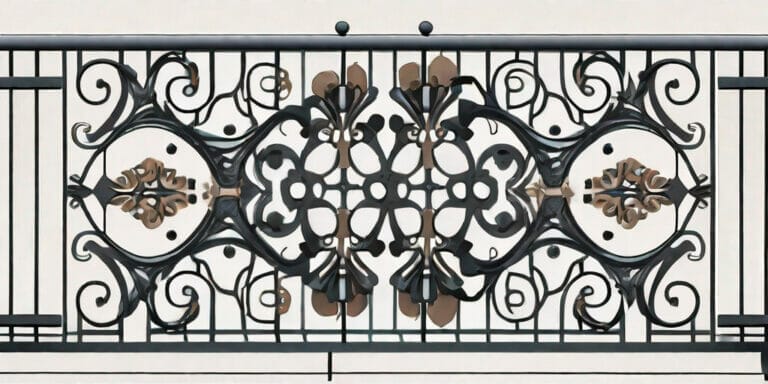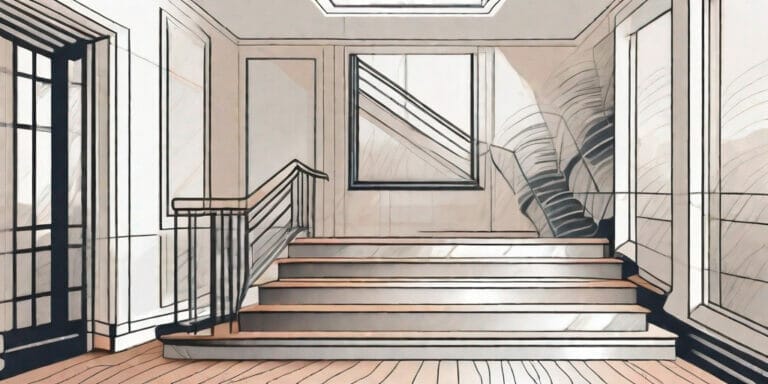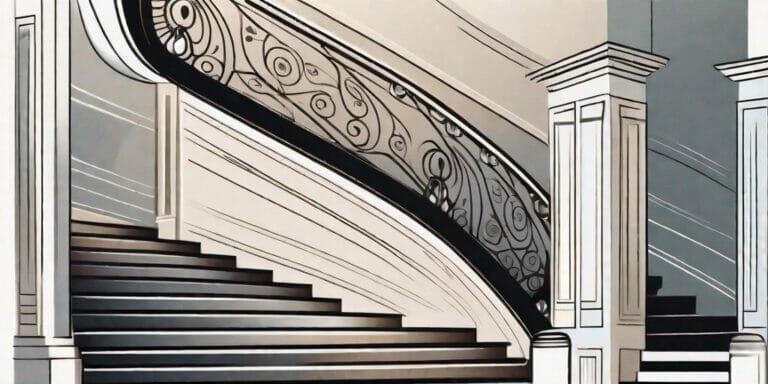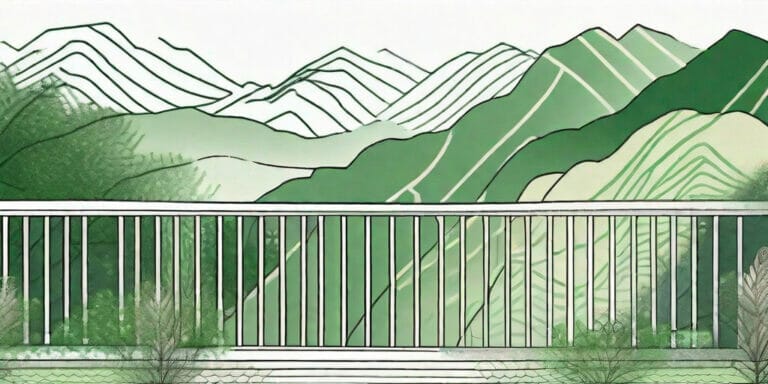Guardrails are an essential safety feature that can provide numerous benefits to both residential and commercial properties. By installing guardrails, you not only enhance the safety and security of your premises but also add value and improve the overall aesthetics. In this article, we will explore the various advantages of installing a guardrail and discuss the importance of proper maintenance and care.
Understanding the Basics of Guardrails
Before delving into the benefits, let’s start by understanding what exactly a guardrail is. A guardrail is a barrier typically made of metal or wood that is installed along the edges of walkways, staircases, balconies, and other elevated areas to prevent accidental falls. By providing a physical barrier, guardrails act as a safeguard and protect individuals from potential accidents and injuries.
Guardrails have been used for centuries as a safety measure in various settings. They can be found in both residential and commercial buildings, as well as outdoor spaces like parks and bridges. The primary purpose of a guardrail is to create a boundary that prevents people from accidentally stepping or falling off elevated areas.
But guardrails are not just a practical necessity; they can also be aesthetically pleasing. Many architects and designers incorporate guardrails into their projects to enhance the overall look and feel of a space. With the wide range of materials and designs available, guardrails can be customized to match the style and theme of any environment.
What is a Guardrail?
A guardrail is a protective barrier designed to provide fall protection and obstruct unauthorized access to hazardous areas. It acts as a visual cue, alerting individuals to potentially dangerous locations and guiding them towards safe pathways.
Guardrails are typically made of sturdy materials like metal or wood, ensuring durability and longevity. The height of a guardrail is an essential factor in its effectiveness. The standard height for guardrails is around 42 inches, but this may vary depending on local building codes and regulations.
In addition to preventing falls, guardrails also serve as a psychological barrier. Knowing that there is a physical barrier in place can give individuals a sense of security and peace of mind, allowing them to navigate elevated areas with confidence.
Different Types of Guardrails
There are various types of guardrails available in the market, each serving a specific purpose. The most common types include metal guardrails, wood guardrails, and glass guardrails.
Metal guardrails, such as steel or aluminum, are durable and provide excellent strength and longevity. They are often used in high-traffic areas where extra protection is needed. Metal guardrails can withstand harsh weather conditions, making them suitable for outdoor applications.
Wood guardrails, on the other hand, are popular due to their natural aesthetic appeal. They blend seamlessly with outdoor environments, creating a harmonious and inviting atmosphere. Wood guardrails are often seen in parks, nature trails, and residential settings.
Glass guardrails offer a sleek and modern look while still ensuring safety. They are commonly used in contemporary buildings, where transparency and visibility are desired. Glass guardrails provide unobstructed views and allow natural light to flow through, creating an open and spacious feel.
Other types of guardrails include concrete guardrails, which are commonly used on highways and roads, and cable guardrails, which are often seen on bridges and highways. Each type of guardrail has its own unique characteristics and advantages, allowing individuals to choose the most suitable option based on their specific needs and preferences.
The Importance of Guardrails in Safety
Guardrails play a crucial role in ensuring safety within residential and commercial settings. Let’s explore some of the key reasons why guardrails are so important.
When it comes to safety, every detail matters. Guardrails are not just a simple addition to a building; they are an essential component that can save lives and prevent accidents. By providing a physical barrier, guardrails act as a protective shield, keeping individuals safe from potential hazards.
Preventing Accidents
One of the primary purposes of guardrails is to prevent accidents, particularly falls from elevated areas. Whether it’s a balcony, staircase, or mezzanine, installing a guardrail provides a protective barrier that acts as a physical deterrent. The presence of a guardrail creates a psychological barrier as well, reminding individuals to exercise caution and stay within the designated safe zones.
Imagine a scenario where there are no guardrails on a balcony. A momentary loss of balance or a distraction could lead to a devastating fall. However, with the presence of a sturdy guardrail, the risk of such accidents is significantly reduced. Guardrails provide peace of mind, both for property owners and the individuals who frequent these spaces.
Providing Direction and Control
Besides preventing accidents, guardrails also play a vital role in providing direction and control. By strategically placing guardrails, you can guide individuals towards designated walkways and prevent them from accessing restricted areas. This not only ensures orderly movement but also helps maintain security and organization within your premises.
For instance, in a busy commercial setting, guardrails can be used to create clear pathways for customers, preventing them from wandering into areas that are off-limits or potentially dangerous. This helps maintain a smooth flow of foot traffic and minimizes the risk of accidents caused by overcrowding or confusion.
Moreover, guardrails can also be used to demarcate different sections within a space, such as separating a dining area from a bar or creating separate zones in a warehouse. By providing visual cues, guardrails help individuals understand the layout of a space and navigate it safely.
Additionally, guardrails can be designed to incorporate signage, further enhancing their ability to provide direction and control. Signage can be used to indicate emergency exits, warn of potential hazards, or provide instructions for safe behavior. This combination of physical barriers and informative signage creates a comprehensive safety system that promotes a secure environment for everyone.
In conclusion, guardrails are not just a safety feature; they are an integral part of any well-designed space. By preventing accidents and providing direction and control, guardrails contribute to the overall safety, organization, and efficiency of residential and commercial settings. Investing in high-quality guardrails is an investment in the well-being of individuals and the success of your property.
The Benefits of Installing a Guardrail
Increasing Property Value
In addition to enhancing safety, installing a guardrail can increase the value of your property. Potential buyers or tenants often prioritize safety features, and having properly installed guardrails can be a selling point. It shows that you have taken the extra step to provide a secure environment, making your property more desirable and potentially increasing its market value.
Enhancing Aesthetic Appeal
Contrary to popular belief, guardrails can be aesthetically pleasing and enhance the overall look of your property. With various designs, materials, and finishes available, you can choose a guardrail that complements the architecture and style of your building. Whether it’s a sleek glass railing or a rustic wooden guardrail, the right choice can elevate the visual appeal and create a harmonious blend with the surroundings.
Ensuring Child Safety
Child safety is undoubtedly a top priority for any responsible property owner or parent. By installing guardrails, you add an extra layer of protection to keep young children safe from accidents. Whether it’s a rooftop terrace or a staircase, guardrails act as a physical barrier, preventing children from venturing into potentially dangerous areas. This peace of mind is invaluable and allows children to explore the surroundings, knowing they are safe within designated zones.
The Process of Guardrail Installation
Choosing the Right Guardrail for Your Needs
When it comes to guardrail installation, it is crucial to choose the right type of guardrail that suits your needs. Consider factors such as the purpose, location, and architectural style of your property. Consulting with professionals or experienced contractors can help you make an informed decision and ensure that the guardrail is not only functional but also aligns with the overall design and safety requirements of your premises.
Steps in Installing a Guardrail
The installation process may vary depending on the type of guardrail chosen, but there are a few general steps involved. First, the area needs to be measured and assessed to determine the appropriate lengths and materials required. The existing structure should be prepared by cleaning and ensuring a secure foundation. The guardrail components are then assembled and securely attached to the appropriate surface, whether it’s concrete, wood, or metal. Finally, a thorough inspection is conducted to ensure stability, alignment, and compliance with safety regulations.
Maintenance and Care for Your Guardrail
Regular Inspection and Cleaning
To ensure the long-term effectiveness and safety of your guardrail, regular inspection and cleaning are crucial. Periodically inspect the guardrails for any signs of damage, corrosion, or loose components. Clean the guardrails using gentle detergents and a soft cloth to remove dirt, debris, and any potential hazards such as ice or slippery substances. Regular maintenance ensures that the guardrails remain in optimal condition and continue to provide the necessary protection.
Repair and Replacement Tips
In the event of damage or wear, prompt repair or replacement is essential. Depending on the nature and severity of the issue, you may choose to DIY or hire a professional. Small damages can often be repaired by replacing individual components or reinforcing worn sections. However, if the damage is extensive or compromises the overall integrity of the guardrail, it is advisable to seek professional assistance to ensure proper repair or replacement.
In conclusion, installing a guardrail offers numerous benefits, including enhanced safety, increased property value, enhanced aesthetics, and child safety. Whether you choose a metal, wood, or glass guardrail, it is important to select the appropriate type for your needs and maintain it regularly to ensure its effectiveness. By investing in a well-designed and properly installed guardrail, you can create a secure and visually appealing environment for yourself, your family, and your guests.






